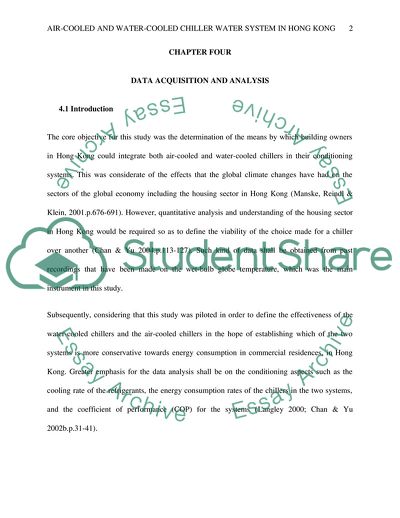Cite this document
(Energy Saving Between Air-Cooled and Water-Cooled Chiller Water System in Hong Kong Essay Example | Topics and Well Written Essays - 4000 words, n.d.)
Energy Saving Between Air-Cooled and Water-Cooled Chiller Water System in Hong Kong Essay Example | Topics and Well Written Essays - 4000 words. https://studentshare.org/engineering-and-construction/1843354-study-on-energy-saving-between-air-cooled-and-water-cooled-chiller-water-system-in-hong-kong
Energy Saving Between Air-Cooled and Water-Cooled Chiller Water System in Hong Kong Essay Example | Topics and Well Written Essays - 4000 words. https://studentshare.org/engineering-and-construction/1843354-study-on-energy-saving-between-air-cooled-and-water-cooled-chiller-water-system-in-hong-kong
(Energy Saving Between Air-Cooled and Water-Cooled Chiller Water System in Hong Kong Essay Example | Topics and Well Written Essays - 4000 Words)
Energy Saving Between Air-Cooled and Water-Cooled Chiller Water System in Hong Kong Essay Example | Topics and Well Written Essays - 4000 Words. https://studentshare.org/engineering-and-construction/1843354-study-on-energy-saving-between-air-cooled-and-water-cooled-chiller-water-system-in-hong-kong.
Energy Saving Between Air-Cooled and Water-Cooled Chiller Water System in Hong Kong Essay Example | Topics and Well Written Essays - 4000 Words. https://studentshare.org/engineering-and-construction/1843354-study-on-energy-saving-between-air-cooled-and-water-cooled-chiller-water-system-in-hong-kong.
“Energy Saving Between Air-Cooled and Water-Cooled Chiller Water System in Hong Kong Essay Example | Topics and Well Written Essays - 4000 Words”. https://studentshare.org/engineering-and-construction/1843354-study-on-energy-saving-between-air-cooled-and-water-cooled-chiller-water-system-in-hong-kong.


